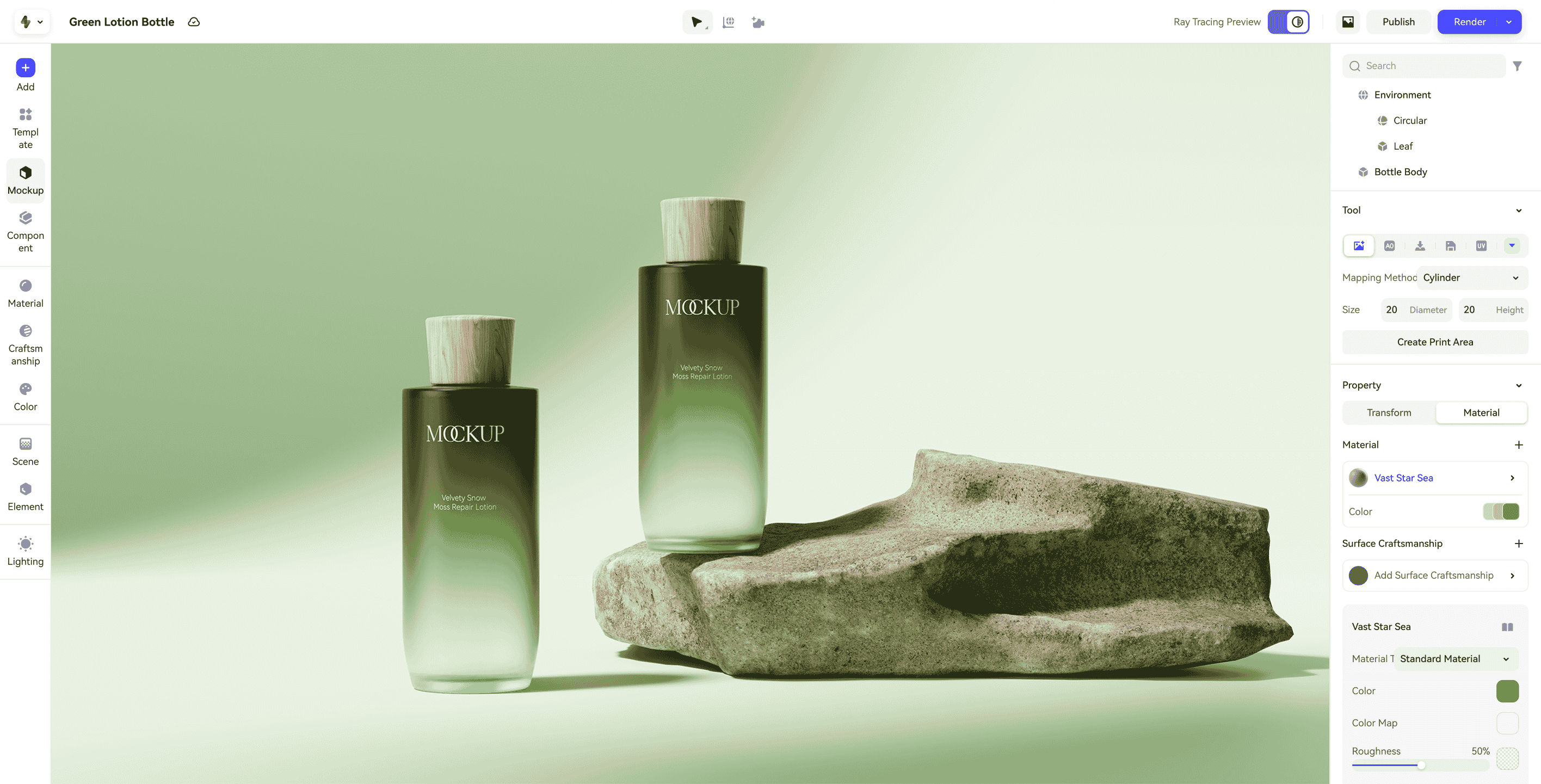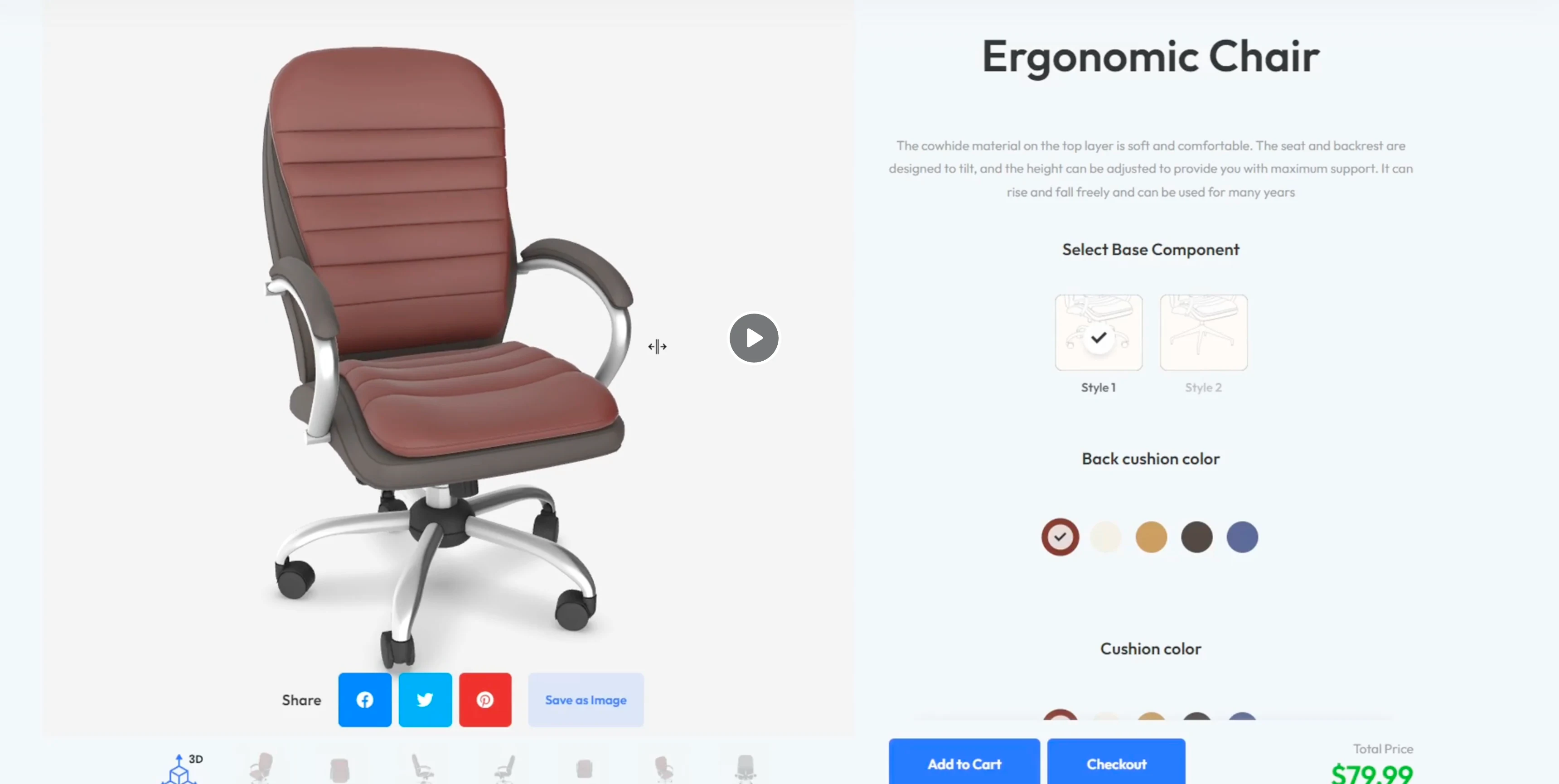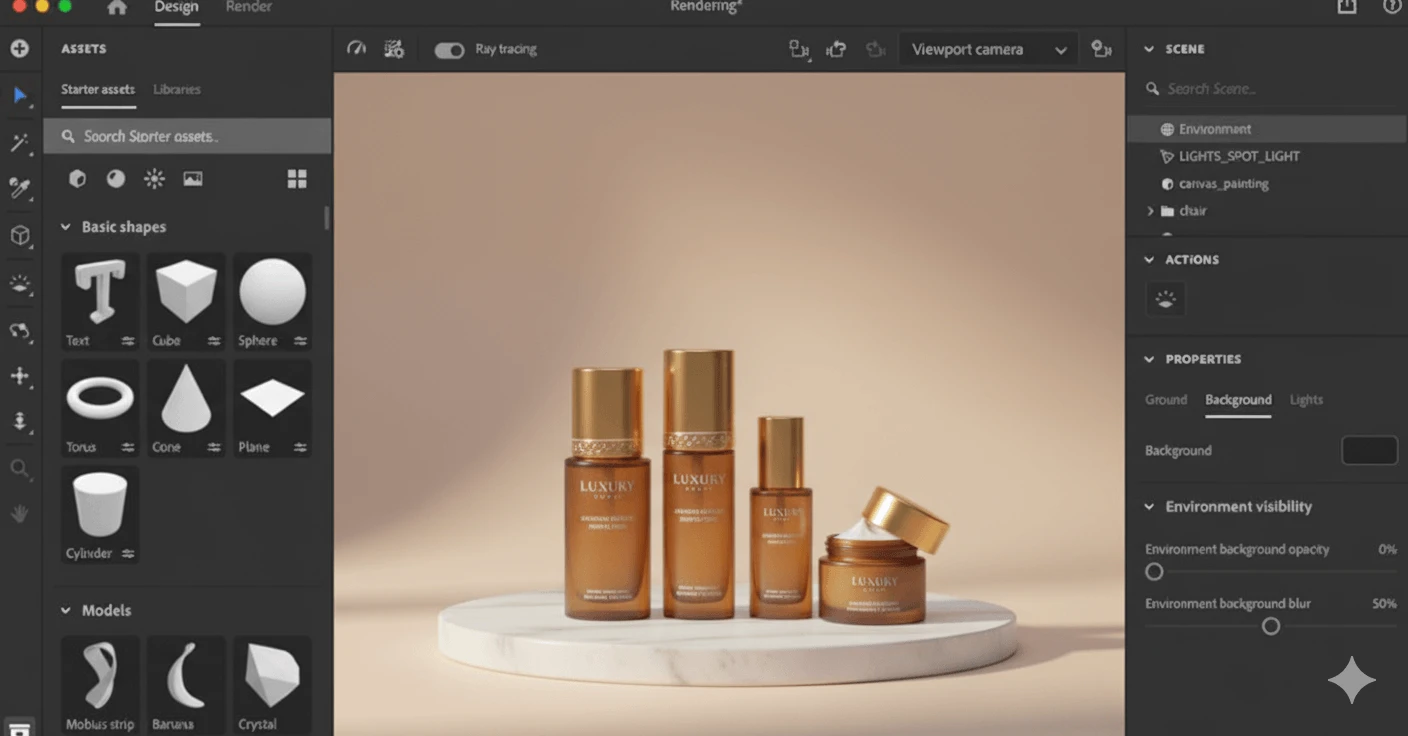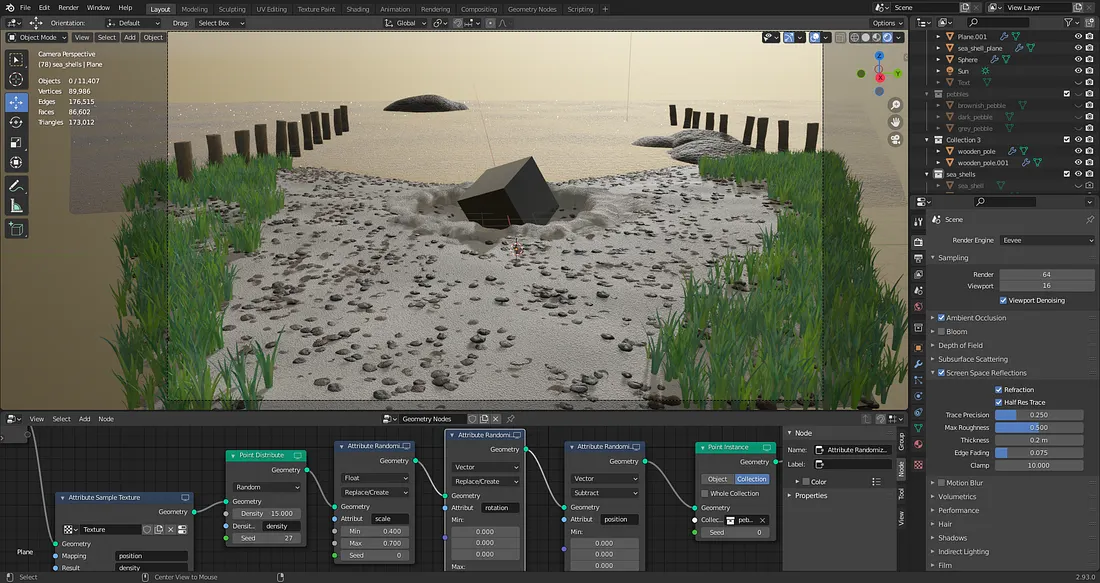Words: 1850 words / Reading Time: 9 minutes / Last updated: September 23, 2025
I've spent over a decade in product design, and I can tell you this with absolute certainty: the goal of product visualization isn't just to get a pretty picture. The goal is to get the right picture, to the right people, right now. A great 3D product visualizer isn't a complex Hollywood VFX suite with a million buttons. It's a precision tool built for three things: speed, communication, and commerce.
We’re not looking for the most complicated tool on the market; we're looking for the most effective.
This guide will break down the top 5 product visualizers available today. But we won't be just listing features. We will judge them based on the criteria that actually matter for modern product teams: the speed of the workflow, the quality of the collaboration, the realism of the images, and the overall accessibility of the platform.
What Makes a Great 3D Product Visualizer? Our Judging Criteria
Before we dive in, let's establish the framework. What separates a decent tool from a game-changing platform? Here's how I evaluate them, as a designer who lives in these apps every day:
 Ease of Use & Workflow: How fast can you get from a raw 3D model to a final, stunning image? The friction in this process is everything.
Ease of Use & Workflow: How fast can you get from a raw 3D model to a final, stunning image? The friction in this process is everything. Image Quality & Realism: Does it produce believable, high-quality visuals that look like a photograph, straight out of the box?
Image Quality & Realism: Does it produce believable, high-quality visuals that look like a photograph, straight out of the box? Collaboration & Sharing: How painful is it to share your work with a non-technical team member or a client for feedback and approval?
Collaboration & Sharing: How painful is it to share your work with a non-technical team member or a client for feedback and approval? Accessibility (Cloud vs. Desktop): Are you forever shackled to a single, monstrously expensive workstation, or can you work flexibly from anywhere?
Accessibility (Cloud vs. Desktop): Are you forever shackled to a single, monstrously expensive workstation, or can you work flexibly from anywhere? Asset Libraries & Ecosystem: Does it provide a rich library of materials, environments, and models to accelerate your creative process?
Asset Libraries & Ecosystem: Does it provide a rich library of materials, environments, and models to accelerate your creative process?
With these criteria in mind, let's break down the best of the best.
The 5 Best 3D Product Visualizers of 2025
1. Realishot — Best Overall for Modern E-commerce & Sales Teams
 Best for: E-commerce brands, marketing agencies, and B2B sales teams who need a unified platform to manage, create, and deploy 3D visuals at scale.
Best for: E-commerce brands, marketing agencies, and B2B sales teams who need a unified platform to manage, create, and deploy 3D visuals at scale.
Realishot takes the top spot because it fundamentally rethinks what a "visualizer" should be. While other tools on this list focus almost exclusively on helping an artist create the final pixel, Realishot redesigns the entire chaotic workflow around that creative process. It's a centralized, cloud-based hub that finally connects your design, marketing, and sales teams, transforming a series of frustrating bottlenecks into a streamlined content production pipeline.
 The Realishot online 3D product visualizer interface, showing a clean layout and a 3D model in the viewport.
The Realishot online 3D product visualizer interface, showing a clean layout and a 3D model in the viewport.
Key Advantage 1: The End of Asset Chaos (Unified 3D Asset Management)
If you've worked in a product company, you know the pain. "Where is the latest 3D model?" "Who has the right texture file for the new color?" Traditional workflows scatter these critical assets across individual hard drives, leading to massive confusion, wasted time, and costly errors.
Realishot solves this by acting as a single source of truth for all your digital products. Every model, material, and CMF variation lives in one secure, accessible cloud library. Your product team uploads the final 3D model once. From that moment on, the entire company—from marketers in another country to salespeople on the road—is working from the correct version. Instantly. Always.
Key Advantage 2: Empowering Marketing to Create on Demand
The old model is broken: the marketing team is perpetually bottlenecked, waiting days for a specialized 3D artist to create every single new image. A simple background change for an ad campaign can become a multi-day ordeal.
Realishot's intuitive, browser-based studio empowers marketers to become creators. Once a designer sets up the initial 3D product scene, the marketing team can independently and safely produce an endless stream of high-quality content without needing deep 3D expertise. This includes:
 Photorealistic Renders: Generate stunning, studio-quality "virtual photographs" for product pages, social media, and ad campaigns.
Photorealistic Renders: Generate stunning, studio-quality "virtual photographs" for product pages, social media, and ad campaigns. Interactive 3D Configurators: Build and embed web-based configurators a customer can use to customize colors and features in real-time on your website.
Interactive 3D Configurators: Build and embed web-based configurators a customer can use to customize colors and features in real-time on your website. Engaging 3D Animations: Quickly create product rotations, assembly instructions, or feature callout videos.
Engaging 3D Animations: Quickly create product rotations, assembly instructions, or feature callout videos. AR (Augmented Reality) Content: Generate "view in your room" assets directly from the same 3D model.
AR (Augmented Reality) Content: Generate "view in your room" assets directly from the same 3D model.
 An interactive 3D product configurator for a chair, created with Realishot.
An interactive 3D product configurator for a chair, created with Realishot.
Key Advantage 3: Transforming B2B Sales with Interactive Demos
This is a game-changer. Imagine a B2B sales team trying to sell large, complex medical equipment or customizable industrial machinery. They're usually stuck with outdated brochures, static PowerPoint slides, and a heavy laptop.
Realishot puts the entire product catalog in their pocket. A salesperson can now walk into a client meeting with just an iPad, pull up an interactive 3D model via a simple web link, and showcase every detail, every configuration, and every function in photorealistic real-time. The impact on face-to-face sales conversion is immense when a client can digitally "hold" a complex machine, rotate it with their own hands, and explore its internal components live in the meeting.
Pros:
 Completely cloud-based, enabling true collaboration via a link.
Completely cloud-based, enabling true collaboration via a link. Unifies 3D assets, eliminating version control chaos.
Unifies 3D assets, eliminating version control chaos. Empowers non-designers to create high-quality marketing content safely.
Empowers non-designers to create high-quality marketing content safely. Outputs a diverse range of assets (stills, animations, configurators, AR).
Outputs a diverse range of assets (stills, animations, configurators, AR). Transforms B2B sales presentations from static to interactive.
Transforms B2B sales presentations from static to interactive.
Cons:
 Requires a stable internet connection for editing.
Requires a stable internet connection for editing.
Alex's Verdict: As a designer who has endured the agonies of the traditional workflow, I see Realishot as the answer to the systemic problems we had all just accepted as "part of the job." Other tools sell you a better shovel. Realishot sells you the architectural blueprint, a coordinated construction team, and the keys to a finished house. For any business that sees 3D product visualization as a core engine for growth, this is the inevitable next step.
2. KeyShot — Best for Standalone Desktop Speed
 Best for: Industrial designers and solo freelancers who need fast, high-quality renders on a powerful local machine.
Best for: Industrial designers and solo freelancers who need fast, high-quality renders on a powerful local machine.
KeyShot is a legend in the industrial design world, and for good reason. Its real-time "Ray Tracing" viewport is famously fast and intuitive. Dragging and dropping materials onto a model and seeing the result instantly is a magical experience. For a single designer sitting at a powerful workstation whose job is to produce a beautiful, static image, KeyShot is hard to beat. Or at least, it was.
-5al51z.jpeg) The KeyShot user interface showing a real-time product render of a camera.
The KeyShot user interface showing a real-time product render of a camera.
Pros:
 Incredibly fast and intuitive real-time viewport.
Incredibly fast and intuitive real-time viewport. Excellent, straightforward material creation tools.
Excellent, straightforward material creation tools. Runs completely offline.
Runs completely offline.
Cons:
 A workflow nightmare for teams. Collaboration means exporting, zipping, and uploading massive files.
A workflow nightmare for teams. Collaboration means exporting, zipping, and uploading massive files. The licensing model is often tied to a specific machine.
The licensing model is often tied to a specific machine. Hogs 100% of your computer's resources while rendering, making multitasking impossible.
Hogs 100% of your computer's resources while rendering, making multitasking impossible.
Alex's Verdict: I love KeyShot. I've built a significant portion of my career with it. It’s a phenomenal rendering tool. But it’s a tool from a different era—an isolated island in a world that now demands connected continents. Read our full KeyShot Review for a deeper dive.
3. Adobe Substance 3D Stager — Best for Adobe Creative Cloud Integration
 Best for: Designers, agencies, and brands who are deeply invested and standardized on the Adobe Creative Cloud ecosystem.
Best for: Designers, agencies, and brands who are deeply invested and standardized on the Adobe Creative Cloud ecosystem.
Adobe Stager is Adobe's answer to the product visualization challenge. Its greatest strength is its seamless integration with the tools you already use. You can send assets from Photoshop or Illustrator directly into Stager, place them on your 3D models, and then send the rendered result back into Photoshop with all the layers intact. It understands and respects a 2D designer's workflow better than anyone.
 A 3D product visualization of a cosmetic package created in Adobe Substance 3D Stager.
A 3D product visualization of a cosmetic package created in Adobe Substance 3D Stager.
Pros:
 Flawless integration with Photoshop and other Adobe apps.
Flawless integration with Photoshop and other Adobe apps. Access to the world-class Substance material library.
Access to the world-class Substance material library. Friendly and familiar user interface for Adobe users.
Friendly and familiar user interface for Adobe users.
Cons:
 The rendering engine can be slower than dedicated competitors.
The rendering engine can be slower than dedicated competitors. Primarily focused on scene setup ("staging"), not advanced material editing.
Primarily focused on scene setup ("staging"), not advanced material editing.
Alex's Verdict: If your entire professional life revolves around the Adobe Creative Cloud, Stager will feel like coming home. It’s the most natural way to introduce 3D into a predominantly 2D workflow. However, for sheer collaboration power and workflow efficiency, purpose-built platforms are still a step ahead.
4. Blender — Best Free & Open-Source Powerhouse
 Best for: Freelancers, students, bootstrapped startups, or anyone on a zero-dollar budget who is willing to trade time for power.
Best for: Freelancers, students, bootstrapped startups, or anyone on a zero-dollar budget who is willing to trade time for power.
Blender is one of the most incredible achievements in software history. It's a complete, professional-grade 3D creation suite that can do literally everything—modeling, sculpting, animation, VFX, and rendering—and it is completely free. Its built-in Cycles renderer is world-class and can produce results to rival any tool on this list.
 The Blender user interface displaying a complex 3D modeling scene.
The Blender user interface displaying a complex 3D modeling scene.
Pros:
 It's free. Forever.
It's free. Forever. Incredibly powerful and versatile.
Incredibly powerful and versatile. Large and passionate global community for support and tutorials.
Large and passionate global community for support and tutorials.
Cons:
 A notoriously steep learning curve.
A notoriously steep learning curve. Is not a specialized "product visualizer." Requires significant setup, plugins, and scene configuration to create a fast, repeatable workflow for product shots.
Is not a specialized "product visualizer." Requires significant setup, plugins, and scene configuration to create a fast, repeatable workflow for product shots.
Alex's Verdict: I have immense respect for Blender. But using it exclusively for product visualization is like using a 747 to deliver a pizza. It's wildly overkill and not purpose-built for the lean, agile speed that product marketing requires. If your budgetary constraints are your absolute top priority, it's the only choice. Otherwise, check out some more focused Blender Alternatives.
5. Vectary — Best for Quick Web-Based 3D Mockups
 Best for: Marketers and designers who need to rapidly create 3D mockups and interactive web graphics, especially when extreme photorealism isn't the primary goal.
Best for: Marketers and designers who need to rapidly create 3D mockups and interactive web graphics, especially when extreme photorealism isn't the primary goal.
Like Realishot, Vectary is a fully online, browser-based platform, which makes it incredibly accessible and collaborative. It has a gentle learning curve and is fantastic for creating 3D elements that can be embedded directly onto websites. It's a wonderful tool for adding a new dimension to a landing page or creating a product mockup in minutes.
-uk74gq.webp) The clean, web-based interface of the Vectary 3D design tool.
The clean, web-based interface of the Vectary 3D design tool.
Pros:
 Fully online and collaborative.
Fully online and collaborative. Very easy to learn and get started.
Very easy to learn and get started. Excellent for creating interactive 3D web elements.
Excellent for creating interactive 3D web elements.
Cons:
 Its rendering capabilities are not designed for high-end, photorealistic product hero shots.
Its rendering capabilities are not designed for high-end, photorealistic product hero shots.
Alex's Verdict: A fantastic, modern tool for a specific job: fast, easy 3D for the web. If you need a quick 3D mockup of a box or want to embed an interactive graphic on your homepage, Vectary is brilliant. If your goal is to create hero images that will be mistaken for a professional photograph, you'll need a more powerful rendering solution.
Comparison Table: Find the Right Visualizer for You
| Visualizer | Primary Use Case | Platform | Ease of Use | Collaboration | Starting Price |
|---|---|---|---|---|---|
| Realishot | E-commerce & Sales Teams | Cloud / Web | ★★★★★ | ★★★★★ | Free Tier |
| KeyShot | Industrial Design / Freelancers | Desktop | ★★★★☆ | ★☆☆☆☆ | ~$99/mo |
| Adobe Stager | Adobe Creative Cloud Users | Desktop | ★★★★☆ | ★★☆☆☆ | ~$50/mo |
| Blender | DIY / General 3D Work | Desktop | ★★☆☆☆ | ★☆☆☆☆ | Free |
| Vectary | Web Mockups / Interactive 3D | Cloud / Web | ★★★★★ | ★★★★☆ | Free Tier |
Conclusion: The Best Tool is the One That Fixes Your Workflow
As we've seen, every tool on this list is capable of creating a beautiful image. But in 2025, a pretty picture is just the price of entry.
The real questions are, what did it take to get that picture? And what can you do with it now that you have it? Did it require a $5,000 workstation, a week of feedback over email, and a dozen confusingly named .zip files? And can it be easily adapted for your sales team, your web configurator, and your AR app?
The most significant innovation in product visualization over the past five years isn't a new ray-tracing algorithm—it's the cloud. The move from isolated, desktop-bound tools to connected, web-based platforms represents a fundamental shift that solves the real business problems: cost, speed, and collaboration. When you're making your choice, choose the workflow, not just the tool.
Ready to try a workflow that was built for the speed and scale of modern e-commerce and sales? Stop waiting for renders and start creating.
